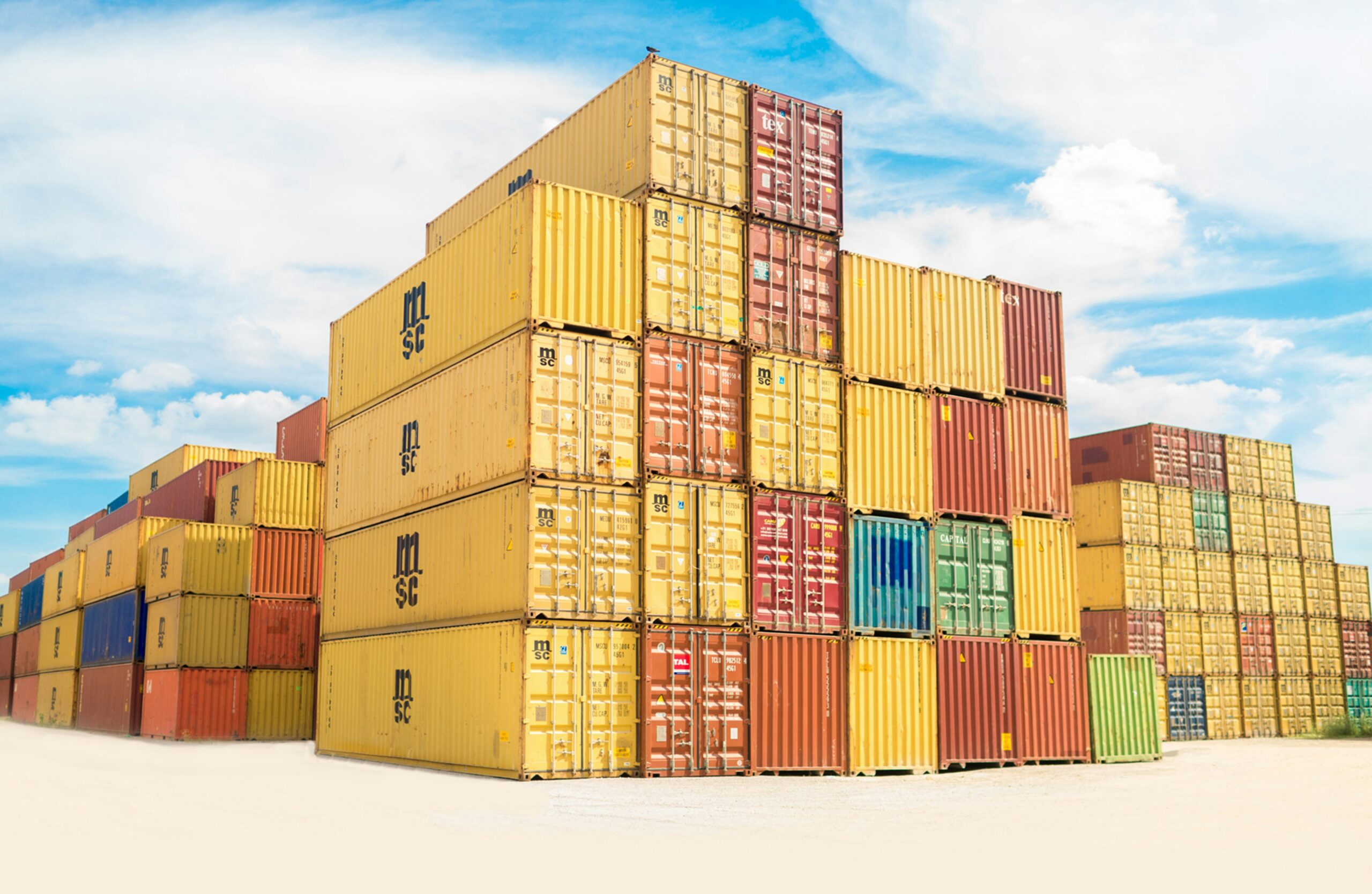Overview of Trade and Logistics in the Gulf Region
The Gulf region, comprising several economically dynamic countries, has emerged as a vital global trade hub, driven by its strategic geographical location, robust infrastructure, and thriving economic environment. The significance of trade and logistics in this area is underscored by the convergence of international shipping routes, making it an essential gateway for goods flowing between Europe, Asia, and Africa. With its well-established ports and logistics networks, the region facilitates the efficient movement of products, thereby enhancing its role in global supply chains.
At the heart of the region’s trade activities are its major ports, such as Port Jebel Ali in the UAE and Port Hamad in Qatar, which rank among the busiest in the world. These ports not only handle a substantial volume of cargo but are also equipped with state-of-the-art facilities that support a wide array of logistics services, including warehousing, distribution, and customs clearance. The integration of technology in port operations, such as automation and digitalization, has further streamlined logistic processes, contributing to improved efficiency and reduced turnaround times.
The transportation networks in the Gulf region are equally significant, encompassing advanced road and rail systems that connect key logistics hubs. Investment in infrastructure development remains a priority for Gulf states, with numerous projects underway to enhance connectivity and facilitate trade across borders. Moreover, the strong economic performance of the region, bolstered by initiatives aimed at diversifying economies away from oil dependency, has catalyzed an increase in trade volumes, particularly in sectors such as retail, manufacturing, and e-commerce.
In light of these developments, 2025 is poised to witness a series of significant events in trade and logistics that will likely further reshape the landscape. Understanding the foundational elements of the Gulf region’s trade dynamics and logistics infrastructure is critical for stakeholders aiming to navigate this evolving environment effectively.
Major Trade Exhibitions and Conferences in 2025
As the Gulf region embraces new economic opportunities, 2025 will see a plethora of pivotal trade exhibitions and conferences aimed at enhancing the logistics and trade sectors. These events will serve as critical platforms for businesses and stakeholders to engage in meaningful dialogue, foster relationships, and explore innovative solutions tailored to the evolving marketplace.
One of the key events scheduled for 2025 is the Gulf Trade and Logistics Expo, slated to take place in Dubai. This expo will focus on showcasing advanced logistics technologies and sustainable practices, bringing together industry leaders, policymakers, and innovators. With exhibitors ranging from transportation service providers to tech companies specializing in supply chain management, the Gulf Trade and Logistics Expo is expected to draw thousands of participants, highlighting the region’s strategic position as a global logistics hub.
Another significant conference is the Middle East Logistics Summit, set to occur in Abu Dhabi. This summit aims to tackle pressing challenges faced by the logistics industry, including regulatory frameworks and the impact of digital transformation. Participants will include logistics professionals, government representatives, and academic experts, providing a comprehensive view of the regional logistics landscape. Workshops and panel discussions will focus on the integration of artificial intelligence and automation in logistics, reflecting a growing trend towards modernization.
The Arabian Supply Chain Conference, also planned for 2025, will delve into supply chain resilience in the wake of global disruptions. This event will attract key players from various sectors, enabling them to share insights on risk management strategies, sustainability, and digitalization trends. The diverse discussions at this conference promise to enhance collaboration among stakeholders, ultimately driving growth and innovation in the Gulf region’s logistics sector.
Infrastructure Developments Impacting Trade and Logistics
The Gulf region is poised for transformative infrastructure advancements in 2025 that are expected to significantly influence trade and logistics dynamics. Among these developments, port expansions play a crucial role. Major ports such as Jebel Ali in the United Arab Emirates and the Port of Doha in Qatar are set to complete substantial expansion projects. These enhancements will increase their cargo handling capacities, facilitating smoother cargo flow and shorter turnaround times for ships. Such improvements are essential in a region that is already a pivotal hub for international trade.
In addition to port expansions, the introduction of new freight rail systems promises to revolutionize regional logistics. A notable project is the GCC Rail Network, which seeks to connect six countries, including Saudi Arabia, the UAE, and Oman. This rail infrastructure is anticipated to provide a cost-effective alternative to traditional truck-based transport, thereby reducing congestion on roads and environmental impact. The anticipated rail connections will not only streamline the movement of goods but also enhance interconnectivity between major cities and trade centers, fostering economic integration.
Furthermore, existing road networks are also set for upgrades, particularly in key trade corridors. Modernizing these roads will improve safety and increase the efficiency of road transport, which is vital for last-mile delivery. Enhanced logistical capabilities resulting from these infrastructure projects are expected to attract foreign investments and stimulate local economies, as they create more competitive trade environments. Businesses will benefit from these advancements, allowing for quicker market access and expanded distribution channels. Consequently, the anticipated developments in infrastructure during 2025 will lay the foundation for significant economic growth within the Gulf region’s trade and logistics sectors.
Emerging Trends and Future Outlook for 2025 and Beyond
As we approach 2025, the Gulf region is poised to witness significant changes in trade and logistics. The integration of advanced technologies into logistics operations is one of the most prominent trends. Automation, artificial intelligence, and data analytics are transforming traditional supply chains, enabling greater efficiency and responsiveness. The adoption of these technologies is not merely a competitive advantage but, increasingly, a necessity for stakeholders aiming to optimize their operations. Innovations such as autonomous vehicles and drone deliveries are becoming more commonplace, providing stakeholders with enhanced capabilities to streamline delivery and reduce costs.
Another vital factor influencing the logistics landscape in the Gulf is the evolving geopolitical environment. Trade patterns are shifting as countries redefine their relationships in response to international events. The Gulf States must navigate these changes, repositioning themselves in global supply chains. This could involve creating new trade agreements or entering emerging markets that previously were not considered. Understanding these shifts will be crucial for businesses as they strategize for the future, allowing them to capitalize on opportunities while mitigating risks associated with instability.
Sustainability is also a key theme that will shape logistics practices in the Gulf region. As global concerns for the environment grow, there is an increasing pressure for businesses to adopt more sustainable practices in their supply chains. This may include transitioning to electric vehicles, utilizing renewable energy for logistics operations, and reducing waste throughout transportation processes. Stakeholders must prioritize sustainability not just for compliance but as a fundamental aspect of their operational strategy, aligning with the broader goals of environmental stewardship and corporate responsibility.
In conclusion, the Gulf region’s trade and logistics sectors are on the cusp of transformation. By embracing technology, understanding geopolitical shifts, and prioritizing sustainability, stakeholders can effectively prepare for the future. These factors will not only enhance operational efficiencies but also position businesses to thrive in an ever-evolving trade landscape.














